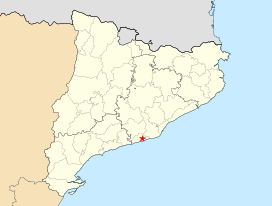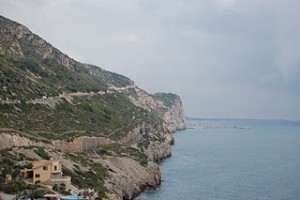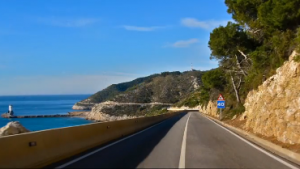Your cart is currently empty!
The Coast Road Diorama – Part 2
In this series’ last post we got to see the beautiful Garraf Curves. We watched Jose at wikislot build the basic diorama structure. We also saw him do the first painting.
If you haven’t read the last post yet, please stop to read Part 1 – Capturing Las Curvas del Garraf. It sets the foundation for this article. Then return to this article.
The Garraf Massif
The Garraf Massif is located south of Barcelona, between the coastal towns of Castelldefels and Sitges. The highly rugged relief, lack of water and vegetation create a harsh environment. Thus, it is not home to any great wealth of wildlife.
Highway C-31 goes along the shoreline side of the Garraf Massif between the two coastal towns. It skirts the southern edge of the Garraf Natural Park, which occupies a total area of 12,820 hectares.
.
Sparsely Wooded
This coastal mountain range is formed from chalky limestone deposits. It is riddled with hundreds of caves, including La Falconera, a very large cave with an underground lake.
The Garraf Massif is sparsely wooded, and has many rocky bare areas. The main vegetation is maquis shrub land.
New Barriers
In 2009 the road was thoroughly rebuilt. The steel guardrails were removed. New barriers, painted the color of the mountains, disguise the road. This helps to visually integrate the C-31 into the Garraf Massif.
Building the Diorama
Jose colors the diorama road wall to mimic the cliff colors.
He uses multiple values of blue to create the impression of depth in the sea. Then he turns to an old diorama standby – silicone caulk. He uses it to create the waves and breakers crashing into the base of the cliff. Once it has cured, Jose adds color to the surf. He uses a simple dry brushing technique to accent and highlight the wave caps.
The region is noted for its sparse vegetation. So, he uses small clumps scattered across the diorama’s cliff face to create scrub. Notice how he uses the natural lines in the cliff face to suggest placement.



